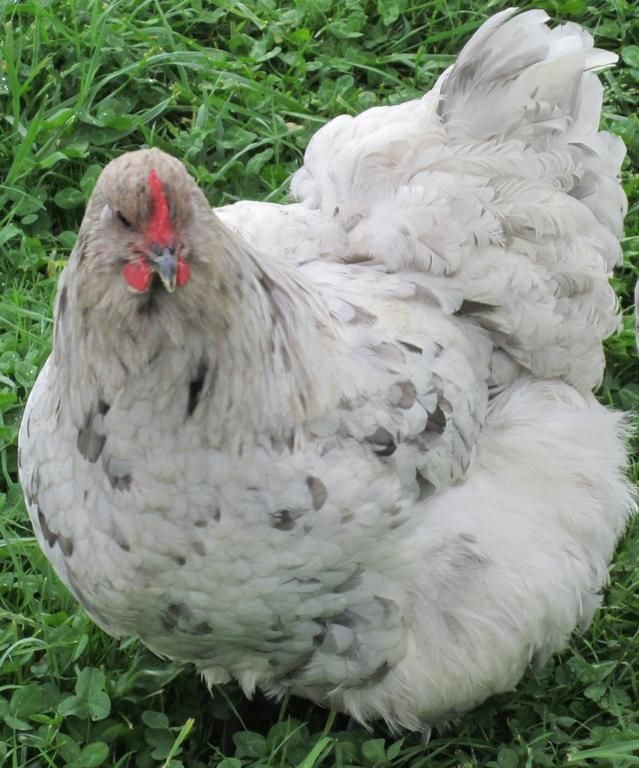Ah--He looks like a sexlink cross! (don't recognise the breed, but who cares?)
So he's actually likely to carry only one dominant White (I/i) because of the parentage, and it looks like she carries the Ml/Ml (melanisation gene--as Aseel are supposed to do, according to my recent research--it enhances the dark edges on her feathers.)
So all of the chicks will still be (E/E^Wh.) But because he probably only carries one copy of dominant white, only half of them should inherit the dominant white. (I/i and i/i) So only
half of them will be white.
The half that don't inherit a copy of dominant white will show the other available genetics that the E gene will allow. So here's a brief explanation of blue.
Blue is not a true-breeding colour. Blue chickens carry one normal copy of black (bl) and one mutant copy of black (BL, which is also called splash or the blue gene--it dilutes true black.) so (Bl/bl.) Half of the chicks will inherit the (Bl) from mum, and half will inherit (bl).
Dad almost certainly carries (bl/bl) and the chicks will inherit one copy of it from him.
So chicks will be (Bl/bl) or (bl/bl). Of course, half of them will be dominant white, so you won't see a thing. The other half, however, have a 50/50 chance of being black or blue.
Two copies black = black hen (bl/bl)
one copy black, one copy blue = Blue
And two copies of blue (Bl/Bl) is splash or "true blue," (not to be confused with "self-blue," which is Lavender)
Additional note: two copies of the same mutation of the gene (I/I or bl/bl) is known as homozygous.
A copy each of two different mutations of the gene is known as heterozygous (I/i or Bl/bl)
If you didn't know that, and you decide to research this further, those two terms should be of great use to you.




